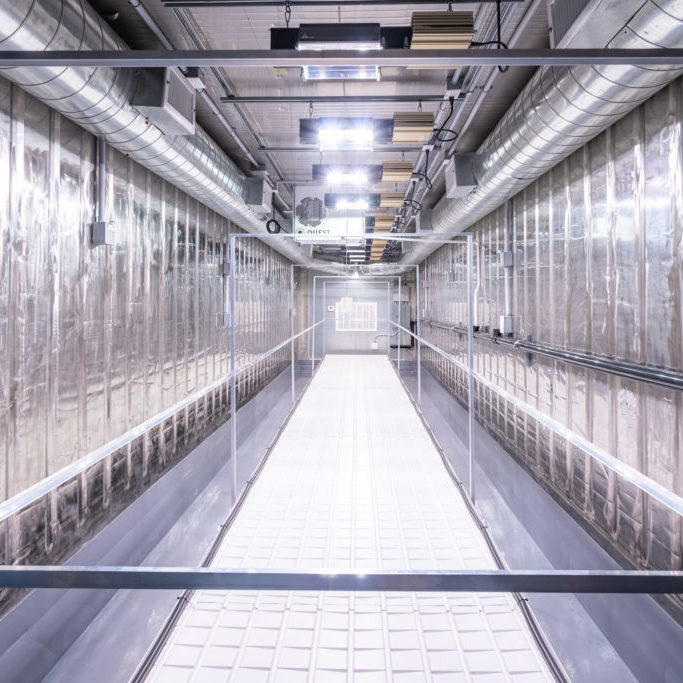Cannabis Growing Costs
It's widely known that the single most critical aspect of growing marijuana indoors is the electricity bill. Lighting, ventilation and air-con all burn through energy! Knowing and forecasting this cost is essential. If you have a business plan you’ll need to show you have a handle on it. If you’re just trying to understand your annual running costs, it's going to be difficult to ignore. If you’re already up and running profitably you’ll still want to maximize profit! In this article we’ll run through some examples showing you how you can figure out and budget for electricity, as well as some tips on how to save!
The Cost of Electricity
Before we start you will need:
- Local cost of electricity: this should be on your electricity bill and is usually measured in kWh
- Wattage of light/fan/pump: the wattage/power information is typically on the box or the item itself. For example, it might say 50W, 150W, or 600W. You’ll do your calculations in kilowatts (kW) so divide this by 1000 so 600W is 0.6kW
- Appliance Time: For example if it’s on 12 hours a day then the monthly cost is 12 hours multiplied by about 30 days or approximately 360hours/month.
This is the formula you’ll use:
Cost of Electricity x Number of Hours x (Wattage in kW) = Total Cost
Example:
Cost of electricity :$0.30
Number Hours: 1,800 light hours
Wattage: 250W=0.25 Kw
Cost of electricity =0.30 x 1800 x 0.25=$135 per month
However bear in mind the light isn’t the only item you’ll run, although it may be the most power hungry. Don’t say to yourself something is “almost nothing” at all these add up! Doing the same calculation for other items gives us, for example:
Water pump – $6
Air pump – $4.12
Exhaust fan – $43.15
2 ceiling fans – $77.8
You can see how this “almost nothing” adds up! It can easily come to nearly the same as your lighting costs. And that’s before including laptops or sensors!

Lighting and Appliance Cost Ranges
Here are some more examples of how much electricity could cost for various lighting options. For these we’ll use an average $0.25 electricity unit cost. We’ll discuss the highest and lowest commonly available options.
Grow Lights
Amounts are for if the lights are kept on for 18 hours a day for 30 days (540 hours). In the flowering stage, your lights will be on for only 12 hours/day so for those months you’ll only need to calculate for 360 hours (12 hours x 30 days). The extra factor to build in here is light output. 1000W HPS output is 110000 to 140000 lumens, which is the same as about 400W LED.
MH/HPS Grow Lights
150W – $20/month
1000W – $135/month
LED Grow Light Examples
87W – $12/month
368W – $50/month
Electric Fans
Amounts are for fans kept on for 24 hours a day for 30 days (720 hours):
6″ Clip-on fan – 13W – $3/month
6” Exhaust Fan – 125W – $23/month
Hydroponic Pumps and Accessories
Amounts shown assume device is kept on for 24 hours a day for 30 days (720 hours):
Air pump – 3W – $0.60/month
Water pump – 26.5W – $5/month
1/13HP Water Chiller – (Capable of lowering an average 20°F in a 30-Gallon tank) – 192W – $35/month
Cost per Grow
Average grow is usually about 3-4 months so let's assume your first grow is 5 months for safety. This gives you time to make a few mistakes and recover. We’ll also assume you use long-flowering strains. Also bear in mind that you'll use less energy in the flowering stage because your lights will only be on 12 hours a day. To make this calculation simpler I’m just going to assume the lights are on 18/6. Again we’re looking for an initial estimate. And again we’ll use $0.25/kWh for the local electricity cost
400W Grow Light – $54/month
2 x 6″ Clip-on fans – 13W – $3/month x 2 = $6/month
10″ tabletop fan – 35W – $7/month
6-Inch Exhaust Fan – 125W – $23/month
Monthly Electricity Cost: $90
Electricity Cost for 5 Months: $450
Let’s assume your set up produces 5 ounces of bud. Therefore you’re paying $90/ounce for electricity. How does this compare per ounce with retail price in your area? For example in Washington state the average price is around for recreational cannabis is around $230 per ounce. £230-$90=$140. It’s this margin which will pay for transport, space, other costs, staff and hopefully your profit too!
We are Ready to Help You Save Money on Your Cannabis Container Farms!

Save Electricity
It's very likely that electricity will be your biggest single cost. Your electrical equipment can of course be optimised and sometimes you’ll have different strategies to trade off against each other. But there are ways you can save on power:
Growing
- Keep your plant growing! Keep the grow room clean and healthy to minimise grow time
- Flowering: choose a strain with a short flowering stage: some strains need as little as 8 weeks though you might have to trade this off against quality. Auto-flowering strains will get to harvest in about 3 months!
- Have your lights on during the cheapest time for electricity- check if your supplier has a cheaper times of day or is cheaper at night.
- Choose a more efficient grow light. If you’re using CFL, consider HPS. If you’re on HPS consider LED
- Choose a small grow light: if you’re already growing all the bud you needs, you probably don’t need a huge 1000W light. You could step down to 600W without noticeable effect
- Lower at the start: plants only need massive light during their growth spurt. Seedlings don’t need 600W HPS to grow!
- Train: use plant training to fill the space under each light
Air
- Placement- think carefully about where to put fans so you need as few as possible
- Straight-line exhaust- keep exhausts and piping straight. Bends, flaps etc lower effectiveness
- Manage temperature before putting fans on- if it’s hot during the day you might consider only putting your lights on at night when it’s cooler.
- No fans until they’re needed- chances are at the beginning of their life, your seedling won’t need to worry excessively about air or humidity control.
Conclusion
This is a hugely complicated area, but all the information you need is around you! As the markets expand its all too easy to get pulled into the rush and forget to plan. The fact is, your business depends on you getting some basic costs under control and planning your set up to make it as efficient and effective as possible.
Address
Micro Lab Farms
3353 Needles Hwy
Needles, CA
(951) 266-6096
